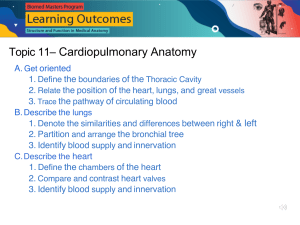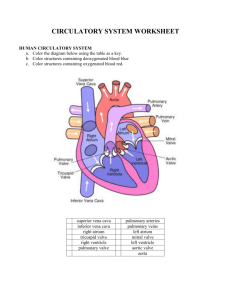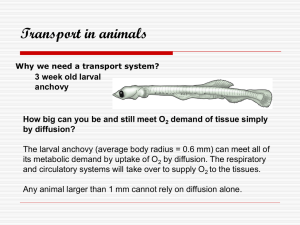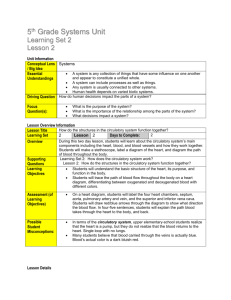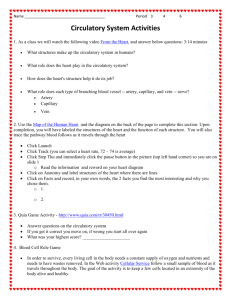Heart Anatomy Handout
advertisement
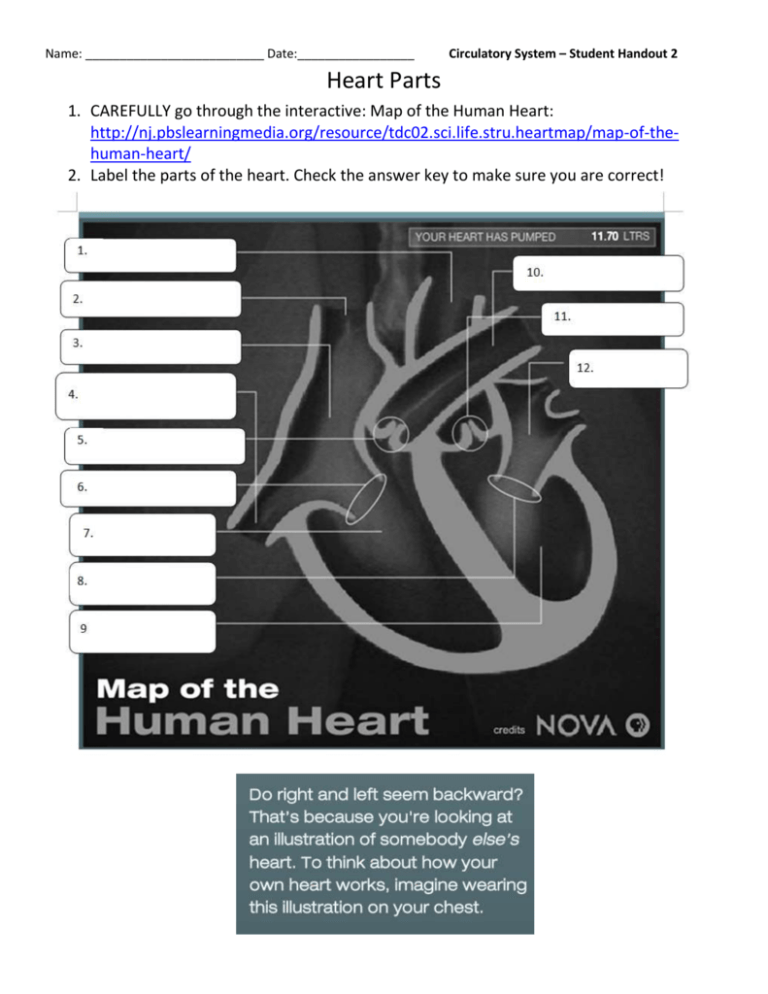
Name: __________________________ Date:_________________ Circulatory System – Student Handout 2 Heart Parts 1. CAREFULLY go through the interactive: Map of the Human Heart: http://nj.pbslearningmedia.org/resource/tdc02.sci.life.stru.heartmap/map-of-thehuman-heart/ 2. Label the parts of the heart. Check the answer key to make sure you are correct! 3. Research: 1. What structures make up the circulatory system in humans? 2. What role does the heart play in the circulatory system? 3. What role does each type of branching blood vessel -- artery, capillary, and vein -- serve? How does the structure of each type of blood vessel relate to its function? 4. PRACTICE! Study your diagram. Cut out the words below. Match the vocabulary without looking at your notes! NO PEEKING! Save your cards so you can practice tonight. You will have a quiz on the parts of the heart! Aorta Inferior Vena Cava Mitral Valve Left Ventricle Superior Vena Cava Tricuspid Valve Pulmonary Valve Right Ventricle Right Atrium Aortic Valve Pulmonary Artery Left Atrium Name: _____________________________ The Circulatory System – The Heart - Homework Background Essay– Read and answer the questions that follow. The heart's primary function is to pump blood to all parts of the body, bringing nutrients and oxygen to tissues and removing waste products from them. Even when our body is at rest, our tissues require a certain rate of blood circulation. During exercise or times when greater demands are placed on the body, blood circulation must increase. To meet these variable demands, heart rate increases or decreases. In addition, blood vessels dilate to deliver more blood, or constrict during times when less blood is required. Usually, our heart works infallibly, beating about 100,000 times a day, or some 2.5 billion times in an average lifetime. Unfortunately, like other muscles and systems in the body, the heart and circulatory system can't always keep up with the demand. Heart disease is the number-one cause of death in the United States, resulting in more than 700,000 deaths annually. Coronary artery disease (CAD), a narrowing of the arteries supplying blood to the heart, is the most common form of heart disease. Although CAD often begins when a person is very young, the disease's symptoms are usually not felt until late in a person's life. Increasingly constricted arteries significantly weaken the pumping action of the heart and, in the most extreme cases, can cause congestive heart failure -- a potentially lethal buildup of fluid in the lungs and other body tissues. Among people more than 70 years old, about 8 out of 1,000 are diagnosed with congestive heart failure each year. This means not that their heart has stopped working, but that their heart is not pumping effectively enough to meet their body's need for oxygen-rich blood, either during exercise or at rest. Fortunately, treatments do exist for patients who have suffered congestive heart failure, including medications that lower blood pressure, lower heart rate, and improve the efficiency of the heart's contractions. The best treatment for congestive heart failure, however, is the prevention of heart disease in the first place. A healthful diet, regular exercise, weight control, and abstinence from smoking can all help prevent coronary artery disease and other forms of heart disease. Discussion Questions 1. Why is it so important that the heart has separate oxygenated and deoxygenated blood? 2. Why does the heart have valves? What would happen if they didn’t work properly? 3. Why do we need blood circulated through the body? What does it do? Give two examples.
